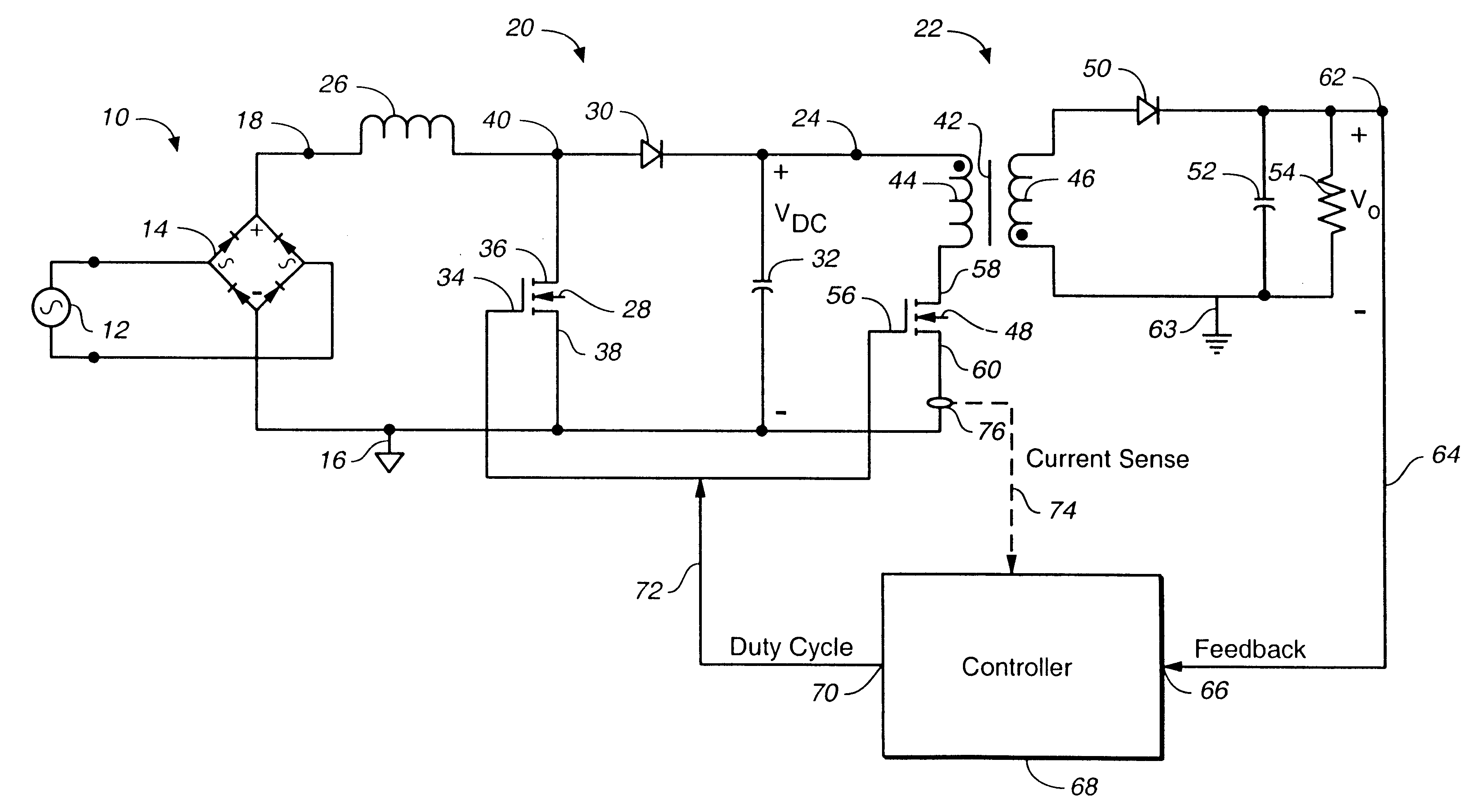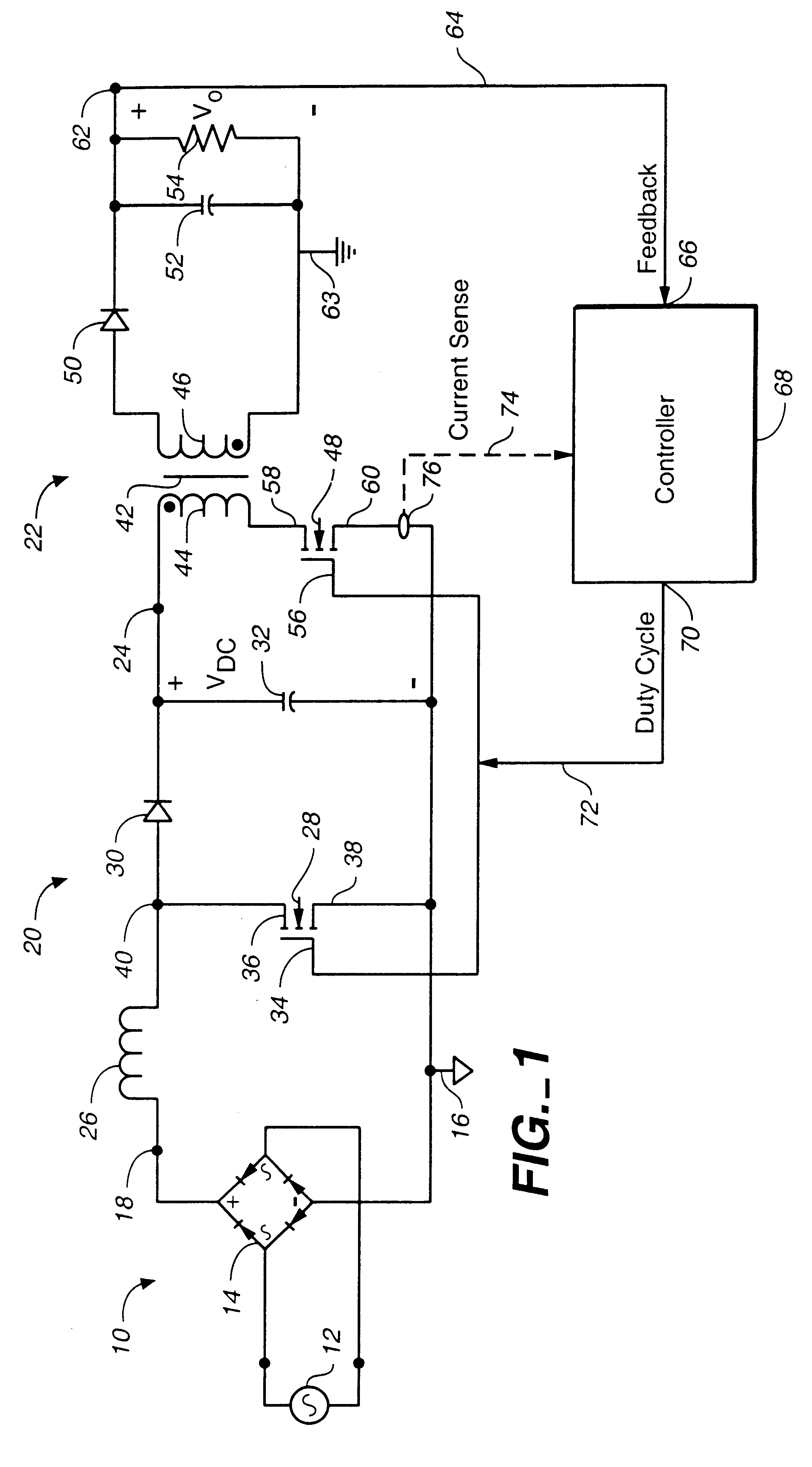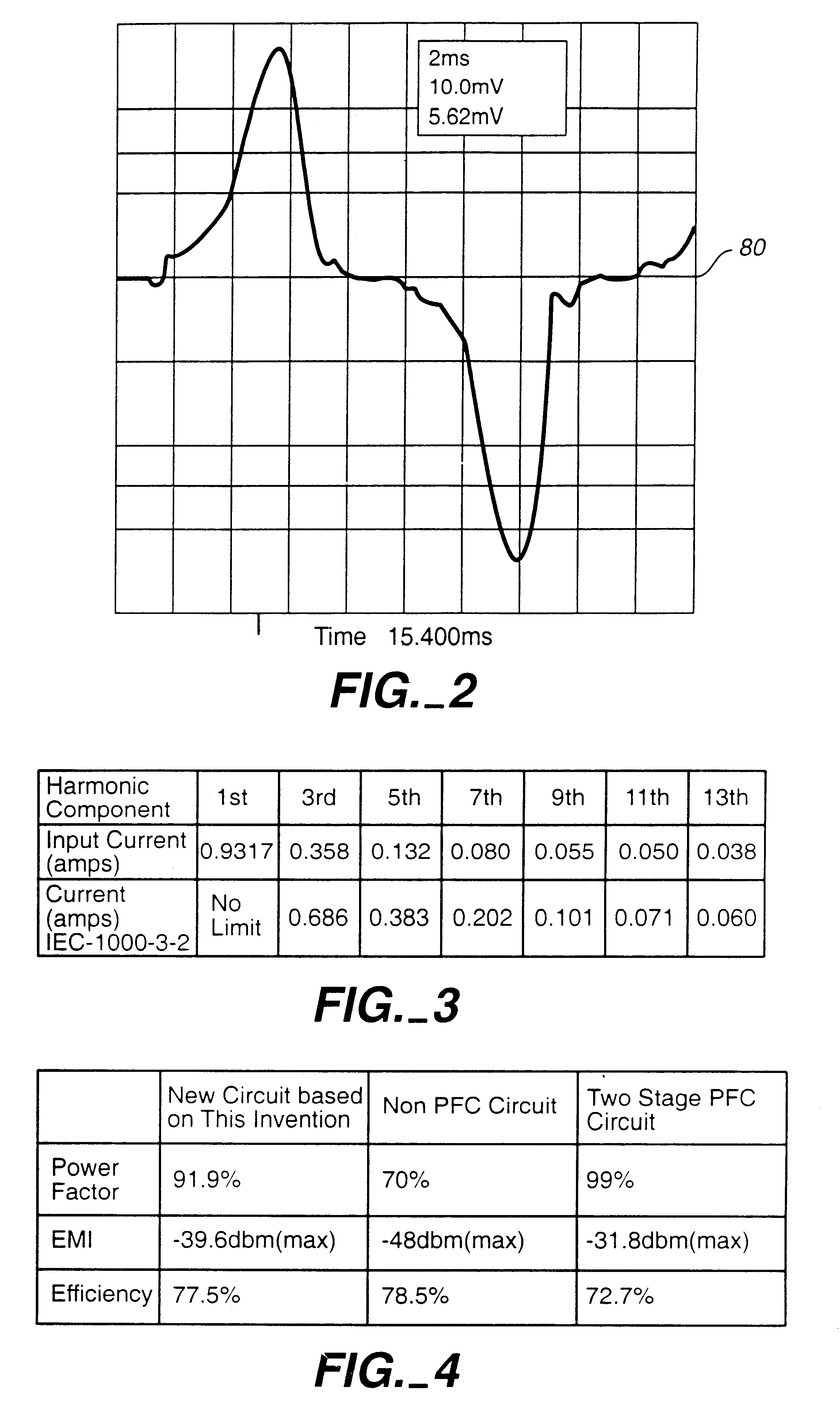Topology and control method for power factor correction
a power factor and power factor correction technology, applied in the field of switching power supplies, can solve problems such as power-line distortion, electromagnetic interference (emi), and limit system design in terms of the functional load placed on the ac line,
- Summary
- Abstract
- Description
- Claims
- Application Information
AI Technical Summary
Benefits of technology
Problems solved by technology
Method used
Image
Examples
Embodiment Construction
The present invention recognizes that prior art AC-to-DC power supplies having power factor correction require current sensing and signal comparison circuitry in order for the current in the boost converter to be substantially proportional to the input AC voltage. A separate control circuit is required for a second DC-DC converter such as a flyback converter, that provides DC regulation for the output voltage. This results in circuit complexity. By providing a means to obtain power factor correction, yet without such additional circuitry, the AC-to-DC power supply system according to the present invention provides power conversion with power factor correction that is accomplished more cost-effectively and efficiently. This is accomplished by providing a feedback control to simultaneously drive the power switches of the boost and flyback converters. In addition, the boost converter's inductor is selected to provide inductor current that is discontinuous when the instantaneous rectifi...
PUM
 Login to View More
Login to View More Abstract
Description
Claims
Application Information
 Login to View More
Login to View More - R&D
- Intellectual Property
- Life Sciences
- Materials
- Tech Scout
- Unparalleled Data Quality
- Higher Quality Content
- 60% Fewer Hallucinations
Browse by: Latest US Patents, China's latest patents, Technical Efficacy Thesaurus, Application Domain, Technology Topic, Popular Technical Reports.
© 2025 PatSnap. All rights reserved.Legal|Privacy policy|Modern Slavery Act Transparency Statement|Sitemap|About US| Contact US: help@patsnap.com



